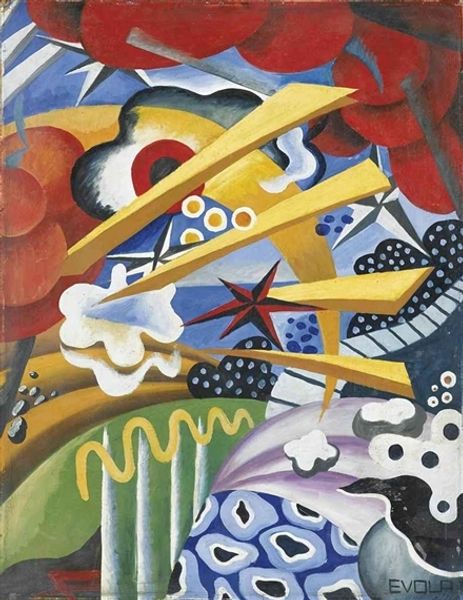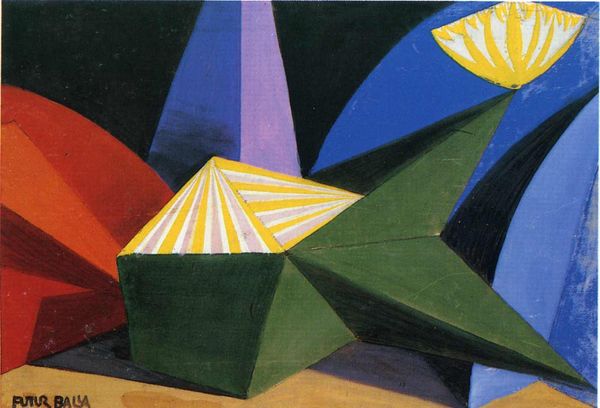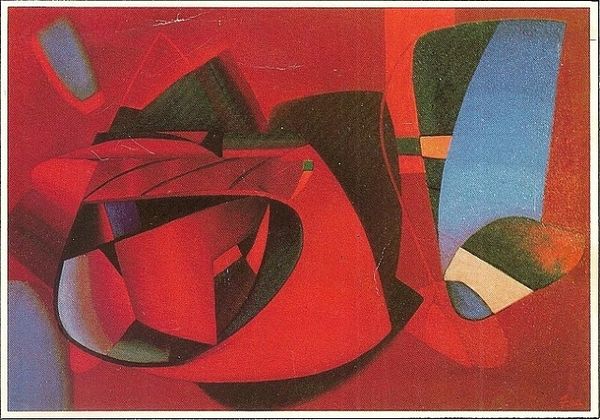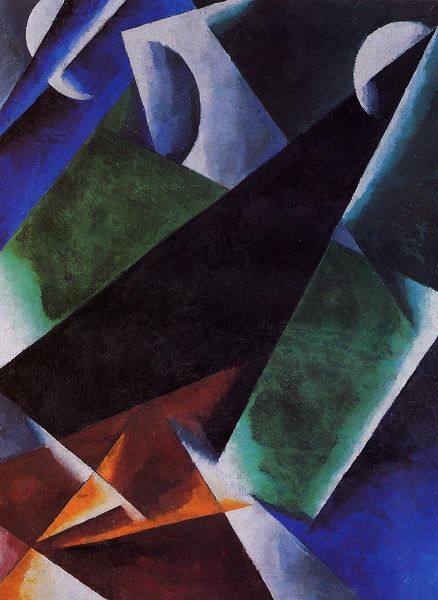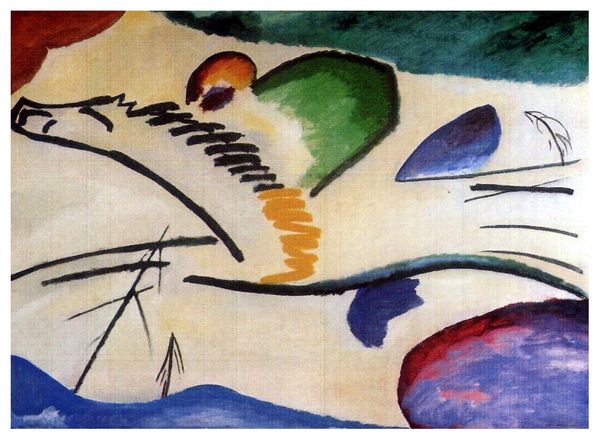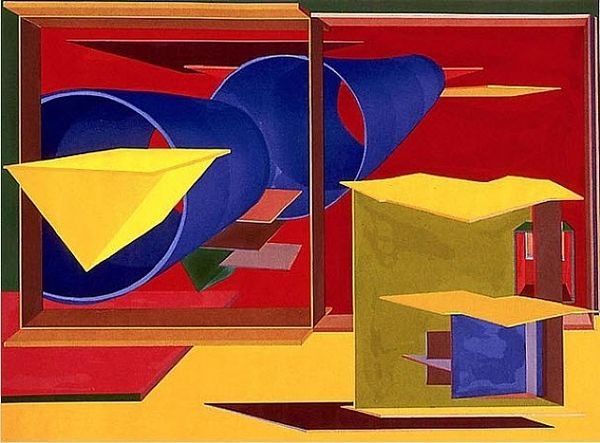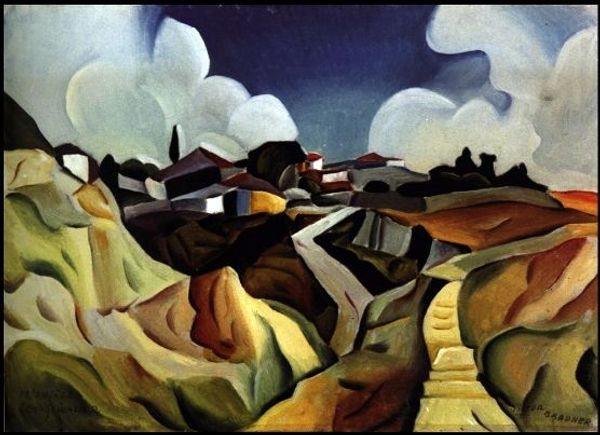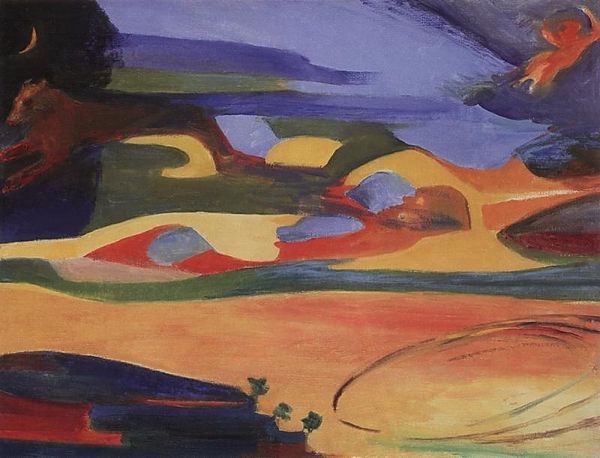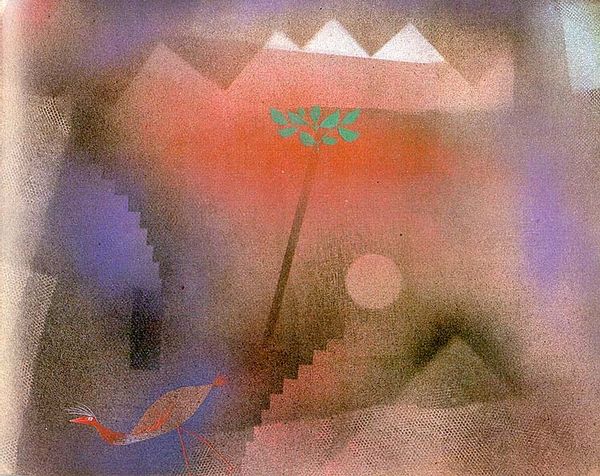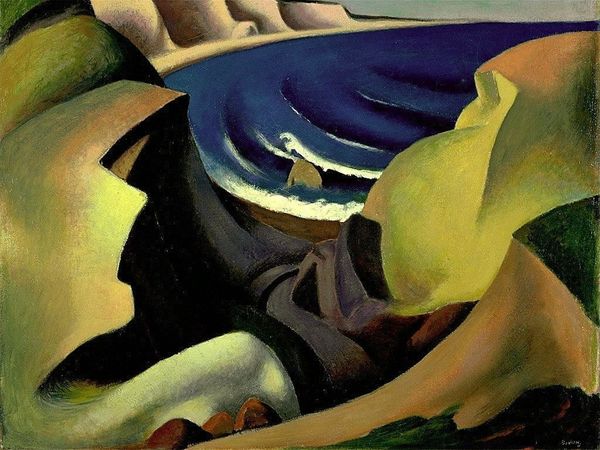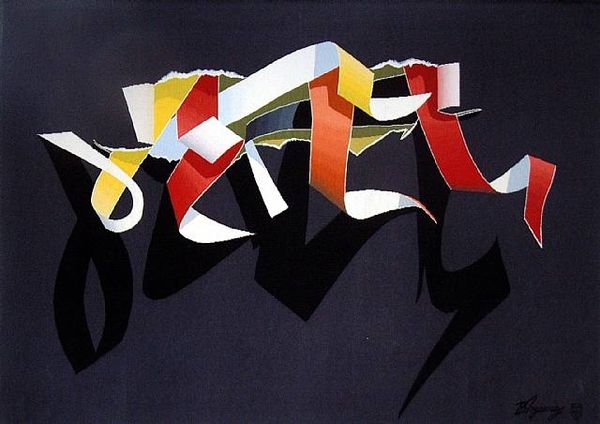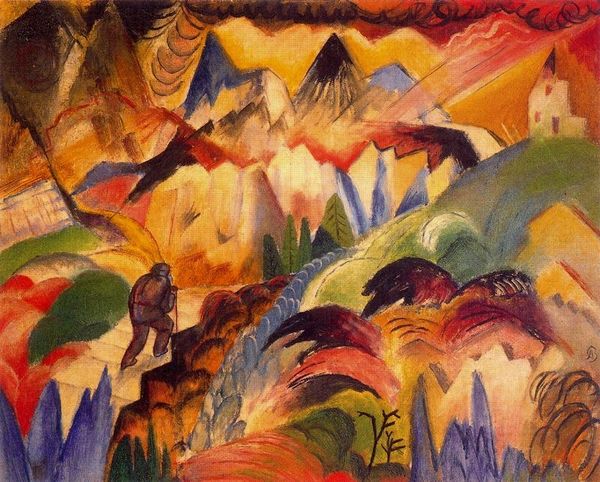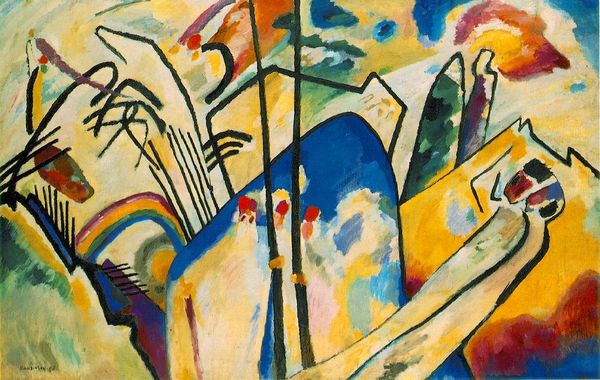
painting
#
abstract painting
#
painting
#
landscape
#
form
#
geometric
#
abstraction
#
line
#
modernism
#
expressionist
#
futurism
Copyright: Public domain US
Editor: So, this is Giacomo Balla’s "Warship, Widow and Wind," painted in 1916. It's…well, it’s certainly a striking composition of geometric shapes and lines. There's a real sense of drama in it, almost ominous. How do you interpret this work? Curator: It's fascinating how Balla, a key figure in Futurism, uses abstraction to capture the emotional weight of wartime. Notice how the 'warship' and the 'widow' are not literal representations, but rather symbolic forms, heavy with implied narratives. Do you feel a sense of fragmented memory here, a world shattered by conflict? Editor: Definitely. The shapes seem to overlap and collide, as if representing conflicting ideas or realities. But why those particular symbols: warship, widow, and wind? Curator: Ah, that’s where the layers of meaning become richer. The warship represents the brutal, masculine force of war, obviously. The widow embodies loss and mourning, but also resilience. And the wind… the wind could be seen as the force of change, or perhaps even fate, shaping events beyond human control. They're primal archetypes playing out a drama, not unlike figures in mythology or religious painting. Editor: So, it’s like he’s using these symbols to convey a universal human experience of war, rather than depicting a specific event. It becomes a psychological landscape. Curator: Precisely! Balla’s work, while rooted in Futurism's celebration of speed and modernity, transcends mere technological enthusiasm, delving into the enduring power of human emotion through carefully chosen symbolic imagery. Do you feel it has that enduring quality? Editor: I do. I initially saw it as just an abstract landscape, but now it’s clear the emotional impact of those symbols transcends their literal interpretation. It definitely makes me consider the depth that abstract art can carry. Curator: Exactly! And that's the beautiful paradox, isn’t it? Abstract forms carrying concrete emotion.
Comments
No comments
Be the first to comment and join the conversation on the ultimate creative platform.
